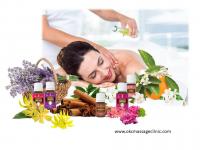January 14, 2024
Essential oils have been used in different cultures around the world since ancient times. Since they demonstrate a range of biological activities, such as antiparasitic, antifungal, antibacterial, antiviral, antioxidant, anti-inflammatory, anticancer, antiaging, and neuroprotective properties, they are used in traditional and complimentary medicines, aromatherapy, massage therapies, cosmetics, perfumes and food industries. Approximately seventy recent studies were selected to report the outcomes such as antistress, antianxiety, analgesic, cognitive, and autonomic effects. Thus according to these studies essential oils showed promising effects on the nervous system, which can be further applied to their use in functional foods, drinks, and alternative therapy.
Essential oils are the naturally aromatic oily liquids produced by plants, which are responsible for their essence or odor. Essential oils can be extracted from different parts of plants, including their leaves, barks, flowers, buds, seeds, and peels. As Essential oils are a concentrated hydrophobic mixture of hydrocarbon volatile compounds that easily evaporate at room temperatures, they are also known as volatile oils. Thus, inhalation via the olfactory system is a common method of use. During the extraction, most volatiles oil are commonly and easily isolated through steam- or hydro-distillation methods. However, for the oils produced from the rind of fruits such as those in the citrus family, the cold-pressed or expressed oils extraction method is usually used. A solvent extraction method is also used for some plant materials that cannot tolerate heat (in steam) or be subjected to cold-pressing, such as the rose, neroli, tuberose, jasmine, and oak. The scent and bioactivity of essential oil depends on their chemical compositions. Different essential oils from different plant species and habitats have various potentials. According to the various biological properties, essential oils have been widely used and have attracted increased attention in recent years. The primary use of essential oils started in the medical field. The term “essential oil” comes from “quinta essentia” in ancient Latin, which means the fifth element. The fifth element is the spirit or life force integrated with the other four elements: fire, air, earth, and water. The isolation of essential oil was thought to be the process of removing the spirit from the plant and the oils were used as healing essences with medical benefits. Until now, the use of essential oils has been studied and demonstrated across a range of biological activities, exhibiting antiseptic, antibiotic, antifungal, antiviral, anti-inflammatory, antioxidants, anti-cancer, antinociceptive, carminative, laxative, rubefacient, antidepressant, anticonvulsant, analgesic, sedative, and immunomodulatory properties. The use of essential oils for the human body or routes of administration occurs not only via inhalation, but also including skin absorption (topical or aromatherapy), as well as ingestion. However, inhalation via the olfactory system is the fastest and easiest method. It has been reported that essential oils affect the immediate changes in the autonomic nervous system and physiological responses such as pupil dilation, blood pressure, muscle tone, pulse rate, skin temperature, and brain activity. These body responses improve physical, mental, and emotional well-being after 15 min of inhalation. The component of essential oils is detected by the olfactory receptors on a nasal olfactory epithelium, which causes the stimulation of olfactory nerves and transmission of a signal to the central nervous system, including the limbic system and hypothalamus, which further modulate human behavior and body function. These indicate that the nervous system is the very first mechanism of the body’s response to essential oils.

